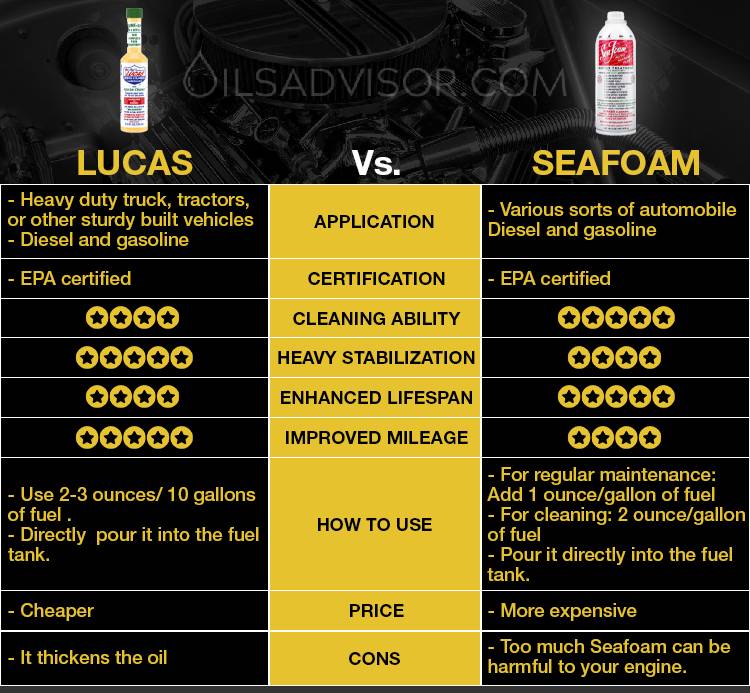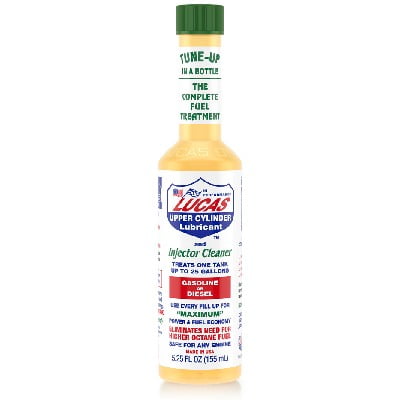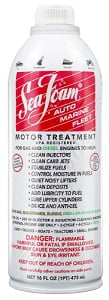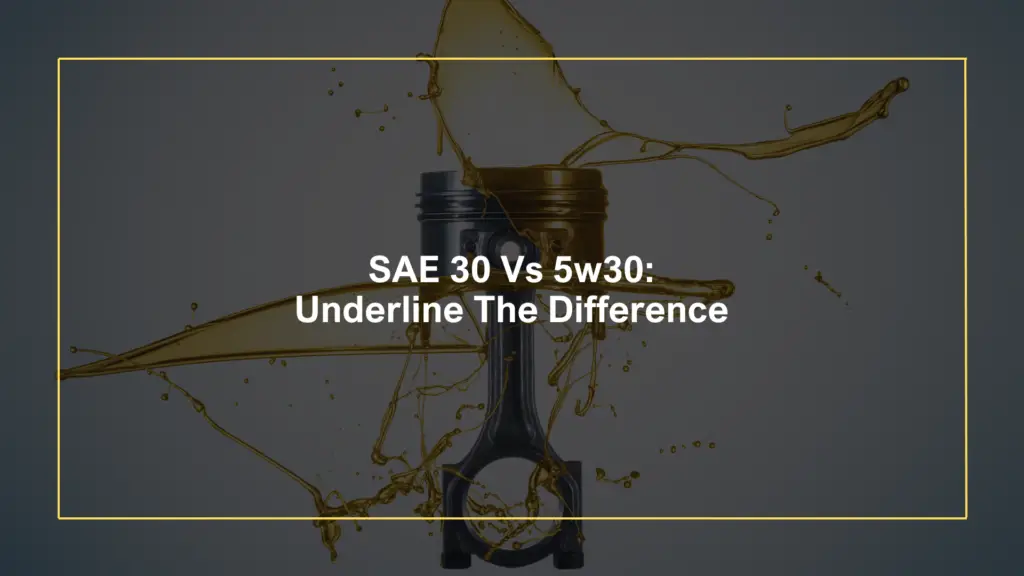Over time carbon and sludge accumulate within your engine and fuel system. This will clog your fuel system and lower engine performance. Fuel treatments are used to clean a vehicle’s fuel system and remove internal contaminants.
There are lots of different types of fuel treatment, Seafoam and Lucas are two commonly used fuel treatment brands. But which one is better?
In this article, I’ll compare the two products in a head-to-head battle to see which one comes out on top.
Continue reading to find out the conclusion and choose the best product for your vehicle!
Lucas Vs Seafoam: Head-To-Head Comparison


Lucas

Seafoam
Cleaning Ability

The winner: Seafoam
Lucas
Lucas is a combination of super slick oil and additives with a relatively high detergent action, which aids in the removal of contaminants and the optimization of engine performance. When you add Lucas fuel treatment into your car, it will clean the general fuel system. This product is also an effective cleaner used for cleaning fuel injectors.
Moreover, the additive helps prevent the accumulation of dirt on expensive parts such as fuel pumps, injectors, and worn piston rings. It dissolves thick carbon deposits found on intake valves and all-over cylinder heads.
Comes with the capacity to resolve low sulfur issues in fuel. Customers have admitted that Lucas fuel treatment makes heavy trucks run smoother and injectors work more quietly on startup. Because it is made entirely of petroleum, it eliminates the problem of dryness and acceleration delays, allowing the engine to respond more quickly to the accelerator.
Seafoam
In terms of effectiveness and efficiency, Seafoam is without a doubt one of the best engine cleaning treatments available. Seafoam fuel treatment is an excellent additive to remove carbon buildup from valves, pistons, and cylinder heads. The product also can clean the fuel carburetor, injectors, passageways and liquefy the internal contaminants in a vehicle engine. Seafoam improves fuel efficiency by dissolving deposits that clog injectors and also improves engine combustion efficiency.
Many users have reported that Seafoam helps improve the combustion efficiency of the engine and aids in the removal of deposits. Seafoam has been noted by customers to make their entire fuel system run more smoothly and last longer.
See Also: BG 44K vs Seafoam: Head-to-Head Comparison
Heavy Stabilization

The winner: Lucas
Lucas
Lucas is a petroleum-based product that is designed to remove deposits from the fuel system. This multi-purpose additive reduces contamination while keeping fuel systems lubricated. It should be used for heavy trucks with complex engines to get the best performance. Moreover, the product is formulated to clean the fuel system and lubricate the top of your car or truck’s engine, keeping it in proper working condition. Its ability to lubricate engines is one of the strongest suits. I’m sure this product will not disappoint you when you use it for your trucks.
Seafoam
Seafoam, on the other hand, is appropriate for light vehicles. It is an excellent fuel treatment product for your high-performance vehicle. Seafoam designs this product for everyday usage. The product can be used for many automobiles: cars, bikes, lawnmowers…
Enhanced Lifespan/Mileage

The winner: Lucas
Lucas
Lucas Fuel System Cleaner is a potent fuel additive that works for increased mileage. Mechanics highly recommend this product, particularly for people who drive high-mileage vehicles. The additive has a great ability to cool down the oil and your engine, thus the engine will be easy to start fast. This will help you save money and time.
Seafoam
Seafoam high mileage treatment is intended for engines with a mileage of more than 7,500 miles. Although it can not provide the ability to extend oil life as well as the Lucas, this number is worth mentioning.
Chemical Ingredients/ Certification
Lucas is made from polyisobutylene, which makes it an excellent fuel additive. The product does not contain any PEA, alcohol, or other solvents. Although it is not as strong as PEA, the addtive does an excellent job of cleaning, lubricating, and preventing new carbon deposits from forming. Lucas is EPA-certified.
Seafoam is made up of pale oil, naphtha, and IPA (Isopropyl alcohol). Some Seafoam products contain a trace of isopropyl, while others do not. Isopropyl is a petroleum-derived ingredient that is both safe and effective. Seafoam is also EPA-certified.
How to use
Lucas
Directly pour Lucas fuel treatment into the fuel tank. You can also use the funnel to pour the Lucas fuel treatment into the gas hole. They claim that exceeding the recommended dosage has no negative effects on your vehicle. The recommended dosage from Lucas is 2-3 ounces of fuel treatment for every 10 gallons of gasoline or diesel fuel.
Seafoam
When using Seafoam for regular maintenance, use 1 ounce per gallon of fuel. For cleaning, add 2 or more ounces per gallon. The more addictive you pour into the fuel, the cleaner it will be. Simply pour it into your fuel tank to lubricate and clean your entire fuel system.
Price
The price of Lucas is quite low for what the product does. Seafoam prices are higher than Lucas’s, but they are still very reasonable. It is extremely beneficial to your vehicle and an inexpensive way to keep it in good condition. Both Fuel Treatment additives are excellent money-saving products.
Cons
Lucas
A disadvantage of Lucas is that it thickens the oil. It is also said to be extremely difficult to get out from under the carpet if it spills in your car.
Seafoam
Too much Seafoam can be harmful rather than beneficial to your engine. You can badly ruin your engine if you misuse the product and do not follow the manufacturer’s instructions.
See Also: Marvel Mystery Oil Good Or Bad
Can I Mix Seafoam And Lucas
Yes, both Lucas and Seafoam can be combined. It is said not to cause any harm to your engine when mixed. The combination will increase its potential when cleaning injectors.
Conclusion
Lucas and Seafoam are well-known brands that have been proven to do exactly what they claim. Both products are reasonably priced, widely available, and simple to use. Customers have also reported that they improve engine performance and extend engine life.
Lucas is best suited for heavy vehicles, whereas Seafoam is suitable for light vehicles. If you’re on a tight budget, Lucas is the way to go. If not, Seafoam is a good alternative. You should select one based on your vehicle and individual interests.
Which is your favorite product? Could you share with us in the comment box below?
Related Reads
- Marvel Mystery Oil Review Compare Marvel Mystery Oil with Lucas and Seafoam to understand which offers the best performance for your engine – Learn more.
- BG 44K vs Seafoam: Head-to-Head Comparison See how BG 44K stacks up against Seafoam and Lucas for cleaning and protecting your engine – Read more.
- Reducing Oil Consumption for Catalytic Converter Efficiency Discover how Lucas and Seafoam products help reduce oil consumption and enhance catalytic converter efficiency – Find out more.
- Unparalleled Penetrating Oils for Rusted Nuts and Bolts Learn how Lucas and Seafoam penetrating oils perform in tackling rusted components and ensuring smooth operation – Explore here.
- The Ultimate Guide: How to Properly Read Your Car’s Oil Dipstick Understand how using Lucas and Seafoam additives can improve oil performance and make reading your oil dipstick more accurate – Discover now.


